Charger NiteCore Intellicharger i4 2014
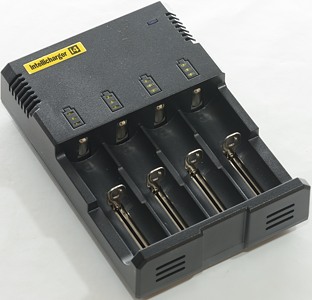
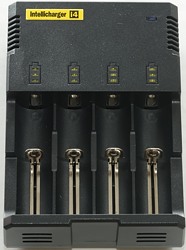
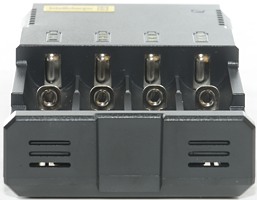
This is an updated version of the i4 charger as can be seen below, the box is marked 2014 version. The charger is a 4 channel charger that can handle both LiIon batteries and NiMH batteries.
One of the visible updates is the metal rail for the battery slider.
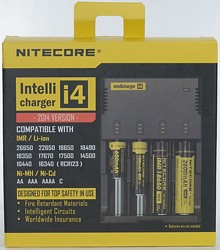

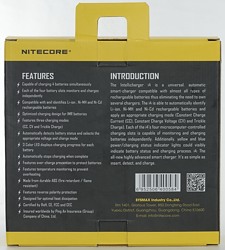

The cardboard box lists lot of specifications, battery types and features.
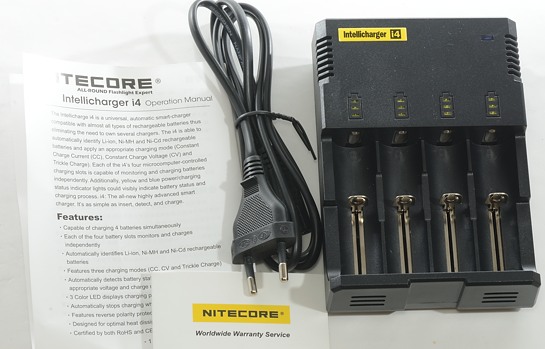
The box contains the charger, a mains cable, manual and a warranty card.
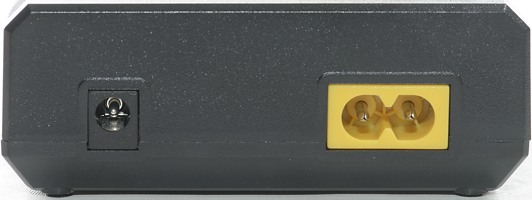
The charger has two power connectors, one for mains input (100-240VAC 50/6+Hz) and one for 12 VDC input.
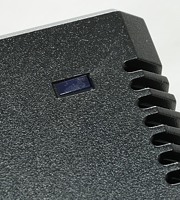
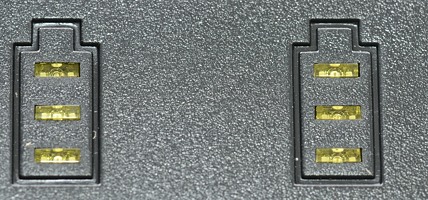
The charger has a blue led in the corner, that is on when power is on. For each battery there are 3 yellow leds to show the charge state or flash due to an error.
The scale on the yellow leds are not very linear, the first one will only flash a short time.
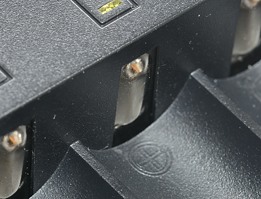
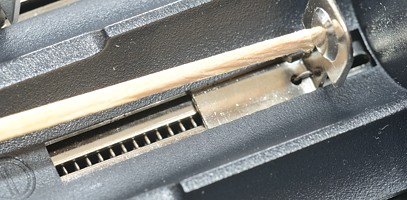
The slots uses the usual construction and works well. They can handle batteries from 30mm to 69.3 mm long.
That excludes some of the longest batteries, especially some protected 26650.


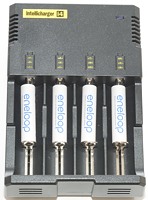
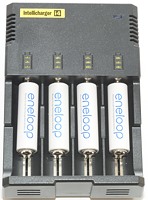
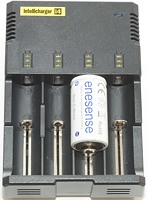

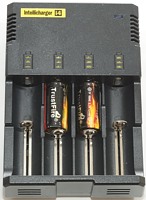
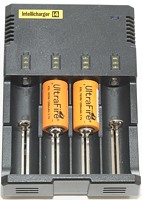
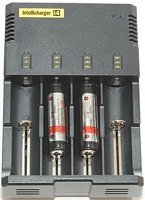
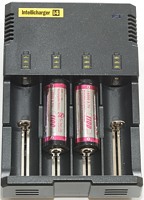
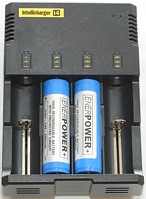
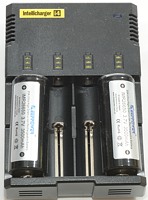
The charger can handle 69.3 mm long batteries, inclusive flat top cells.
With C and 26xxx batteries there are some restrictions due to battery size.
With smaller batteries the charge current can be too high, this will reduce the lifetime of the batteries. There is a trick to get around this, see below.
A look inside the charger
Nitecore asked me to show the inside of the charger:
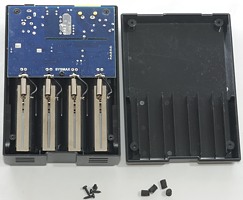
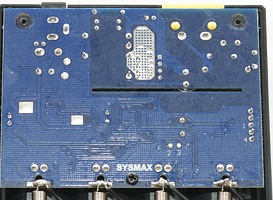
The screws was placed under the four feet, this is very common praxis.

The 3 leds for each battery is on a separate circuit board.
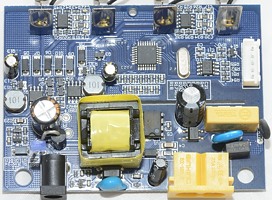
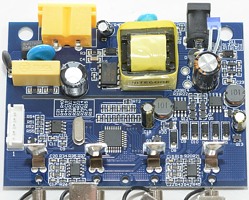
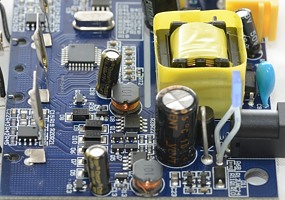
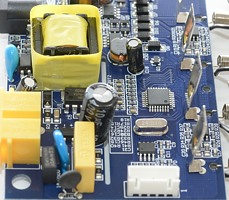
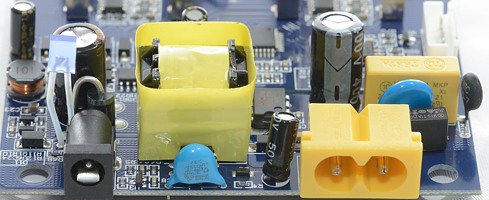
Measurements
- Discharges with 0.8mA when not connected to power
- Charges with 0.2mA when LiIon battery is full.
- Will not restart if battery voltage drops.
- With a empty battery the charger will flash the 3 yellow leds and pulse the current.
- At 0.8 volt the charger will assume NiMH and start charging.
- The charger will assume NiMH below 2 volt and LiIon above 2 volt.
- Charge will restart charging after power loss or battery insertion.
- C batteries are best charged in center slots, in the outer slots the plus pole slides off the plus terminal. This limits the charging to one C cell at a time.
- The charger has two charge circuit, one is serving slot #1 and #3, the other is serving slot #2 and #4.
- When a charge circuit has batteries in both slots, in will use 2 second on each in a 4 second cycle.
LiIon charging
%20%231.png)
The charger does a simulated CC/CV charger with a 50mA termination, this is fine.
I do not know where the jump in current comes from, it does make the charging a bit slower, but does not affect the quality of the charging.
%20%232.png)
%20%233.png)
%20%234.png)
The other channels has the same CC/CV curve, but without the jump. I wonder about the variations in the termination current.
%20%231.png)
%20%231.png)
There is not much variation in charge time for the different capacities.
%20%231.png)
The old 16340 cell, does also have a jump in current, here the reason is obvious: The voltage gets too high and the charger has to do a fast adjustment in the current.
%20%231.png)
%20%231.png)
The two other small batteries are also charged fine. It looks like the jump in current is used when the charger detect a high voltage.
.png)
With more batteries in the charger it will alternate between the slots and the effective charge rate is halved. Due to the low charge rate, there is not that much heat.
.png)
When using the DC input the charger needs slightly above 0.8A. Notice the temperature is about the same with DC supply as with mains supply, i.e. the build in mains supply do not generate much heat.
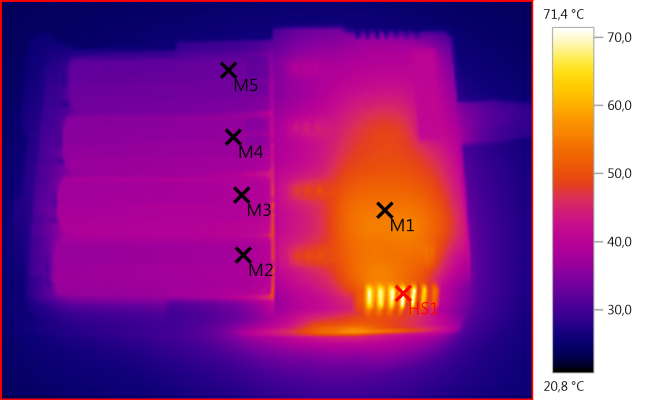
M1: 54,5°C, M2: 38,0°C, M3: 38,6°C, M4: 36,3°C, M5: 33,0°C, HS1: 71,4°C

M1: 55,0°C, M2: 35,8°C, M3: 36,5°C, M4: 34,4°C, M5: 31,6°C, M6: 48,4°C, HS1: 60,9°C
It is interesting to see where the heat is and the look at the circuit board photo. It looks like the heat is generated around the two inductors marked "101", that is the charging circuits.
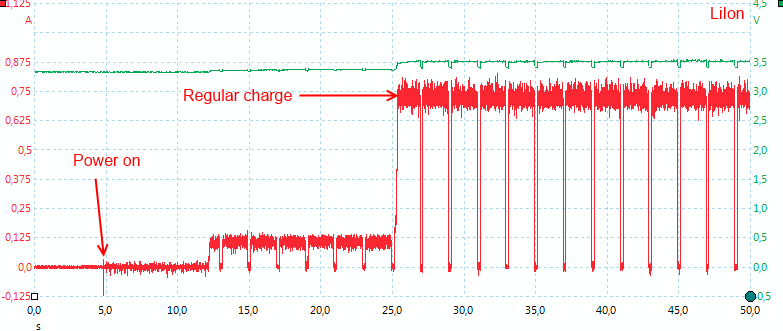
When powered on, the charger needs some time to startup. As can be seen it uses about 20 seconds, before engaging full charge current.
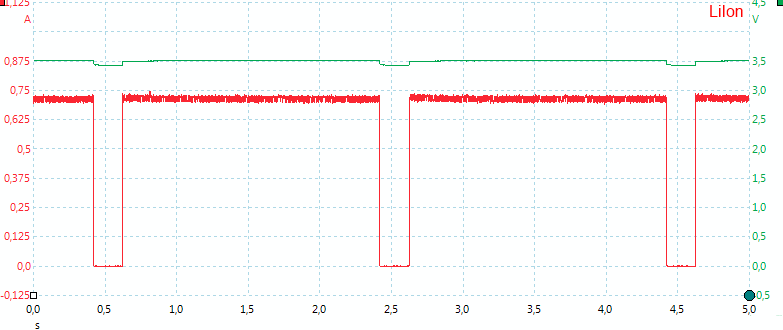
A closer looks at the pulsing when charging.
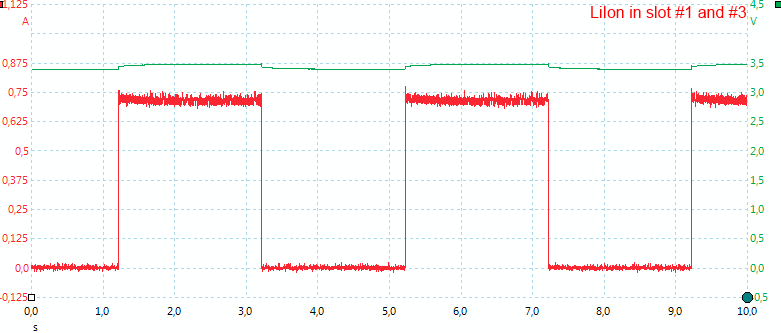
When a charge channel charges two batteries it will use 50% of the time on each.
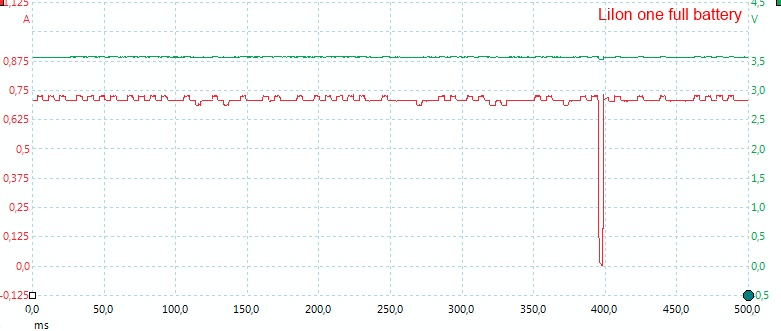
When one of the batteries are full, it will use the full current on the other battery. I wonder if it is a software bug that the pulses are very fast.
NiMH charging
%20%231.png)
The NiMH charging stops on voltage, not -dv/dt, this means the batteries may not be fully charged. To compensate for that the charger is using a fairly high trickle charge current.
This works, but it not the best charge algorithm and it is a good idea to remove the batteries within a few hours when they are full.
%20%232.png)
%20%233.png)
%20%234.png)
All channels works the same.
%20%231.png)
The eneloop XX needs a bit more time and it looks like it was just about full (There is a small temperature rise). The trickle charger stays at a high level.
%20%231.png)
The AAA cell does charge fine. The manual warns against charging a NiMH AAA cell at full current, but that is not really a problem as long as the battery is removed when the charger is finished.
%20%231.png)
The charger is very fast to detect a full cell.
.png)
With four cells, the charge current is halved.
.png)
Charging NiMH uses less current on the DC input, compared to LiIon cells, only about 0.5A.
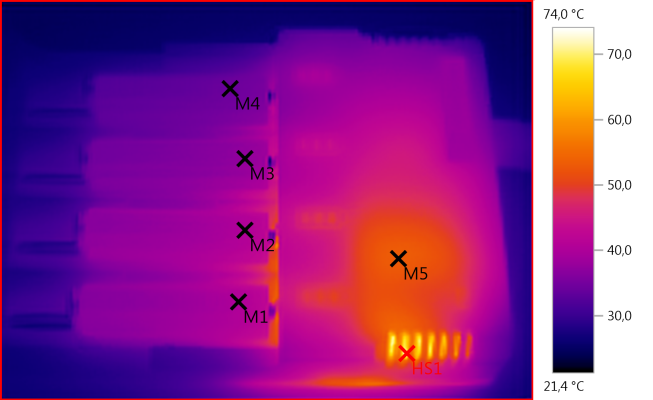
M1: 40,2°C, M2: 40,5°C, M3: 37,3°C, M4: 34,2°C, M5: 53,2°C, HS1: 74,0°C
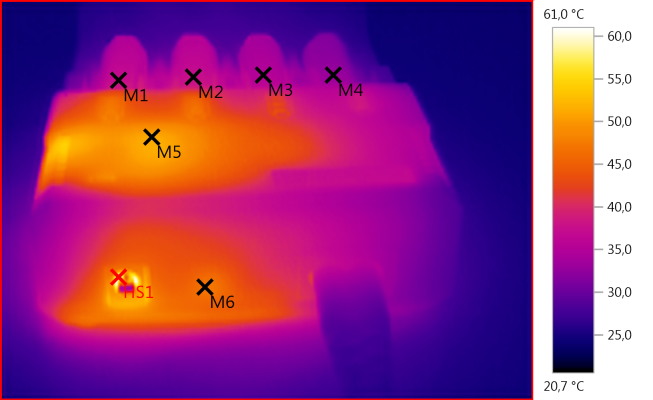
M1: 37,6°C, M2: 37,7°C, M3: 35,3°C, M4: 33,1°C, M5: 51,0°C, M6: 47,1°C, HS1: 61,0°C
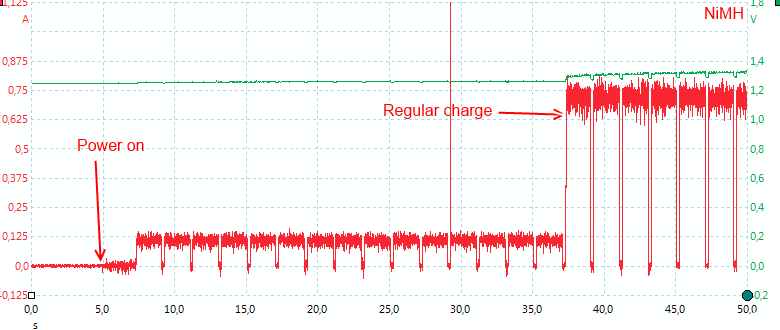
NiMH needs about 30 second to start.
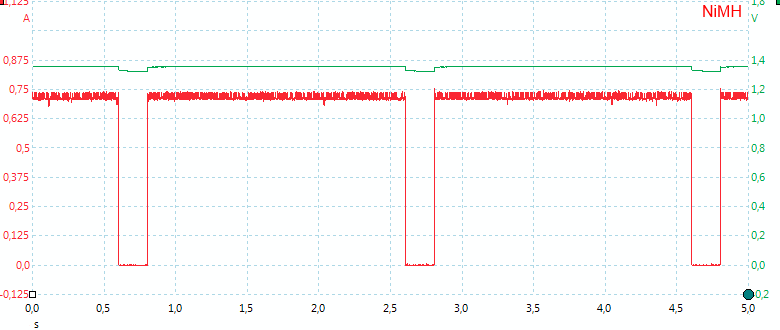
The pulses looks the same as on LiIon.
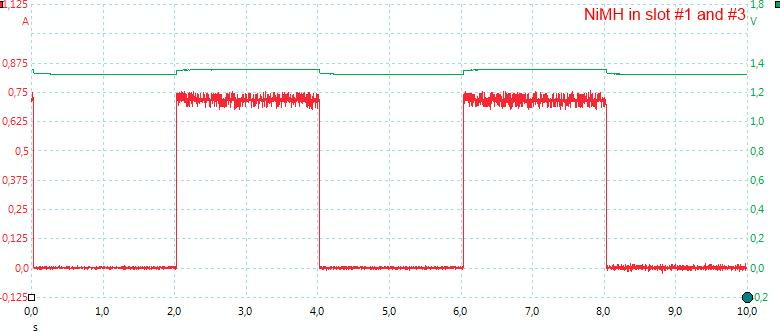
With two NiMH the charger uses 50% of the time on each.
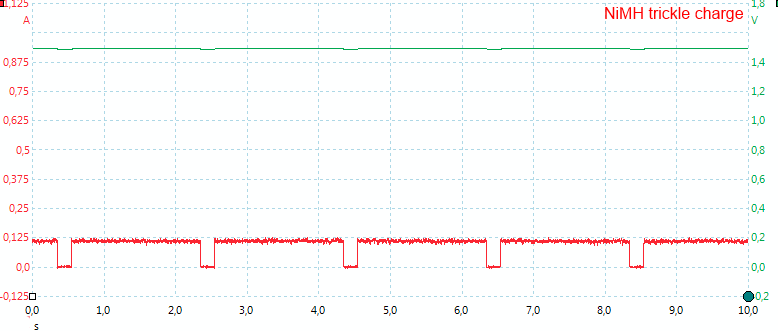
The trickle charge uses smaller current pulses, this looks like the same type of pulses that is used during startup.
LiIon+NiMH charging
.png)
With one NiMH battery and 3 LiIon batteries, the charger has no problem with charging the NiMH.
.png)
With one LiIon and 3 NiMH batteries, the LiIon is also charged fine.
The temperature curve is for one of the NiMH batteries and it can be seen that when they are finished, there is slightly more current for the LiIon charging.
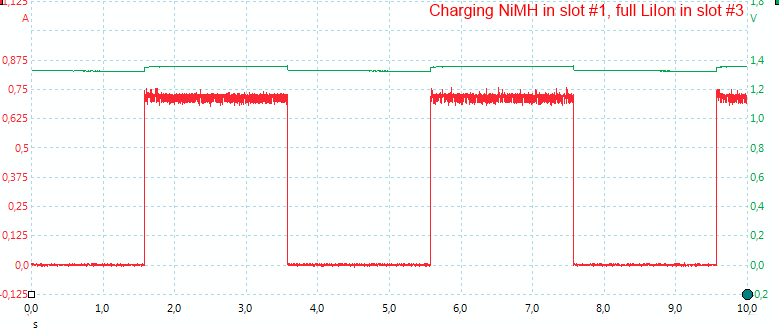
When the charger is finished with a LiIon battery, it will usual redirect the current to the other slot on the charging circuit, but not when a NiMH battery is included.
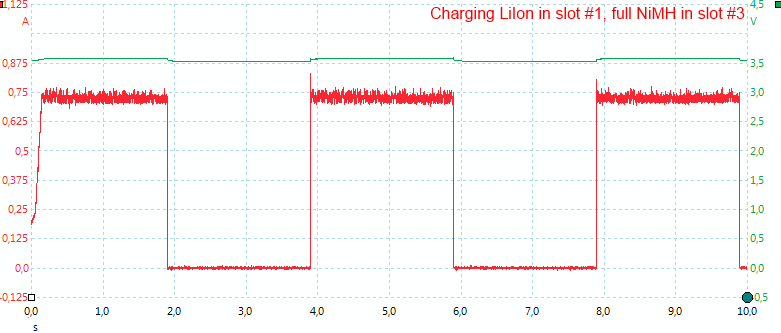
It is the same the other way around.
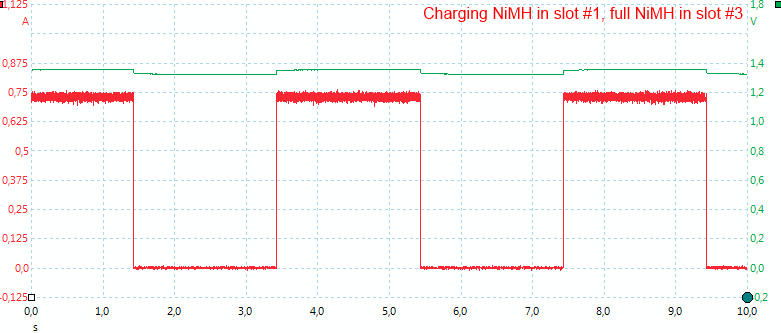
Even with two NiMH batteries.
It is easy enough to see why with NiMH, it needs the charger circuit to trickle charge, but I wonder why it also does it with a LiIon cell.
This brings me around to the trick that can be used when charging small LiIon batteries: Simply put a NiMH battery in the other slot, it does not really matter if it is full or empty (A old worn out NiMH is perfect).
I.e. to charge a small LiIon in slot #1, but a NiMH in slot 3.
I.e. to charge a small LiIon in slot #2, but a NiMH in slot 4.
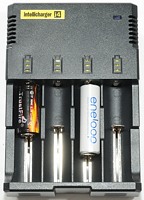
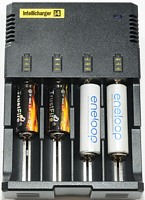
Testing the mains input with 2500 volt and 5000 volt between mains and low volt side, did not show any safety problems.
Conclusion
The charger does a good charging on LiIon, with NiMH it is best to remove them a few hours after the charger has finished.
I would have liked the slots 2 mm longer, some protected 26650 are rather long.
Compared to the V2 i4 the charger has gotten metal rails for the sliders (nice) and a changed NiMH charging. With the added trickle charging the batteries will be filled, if they are left in the charger, but they will also be over charged if left to long, due to the high trickle current.
The i4 is still a good universal charger, if you have the patience for it.
Notes
The charger was supplied by a Nitecore for review.
Review of old i4 (V2)
Here is an explanation on how I did the above charge curves: How do I test a charger
